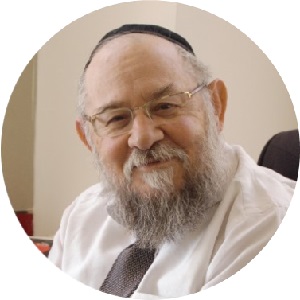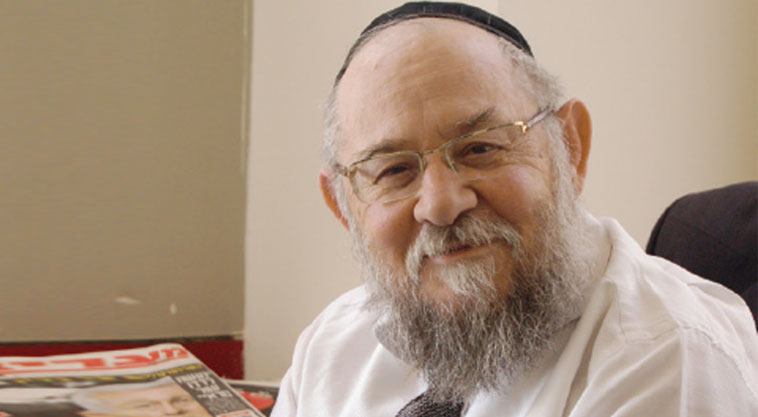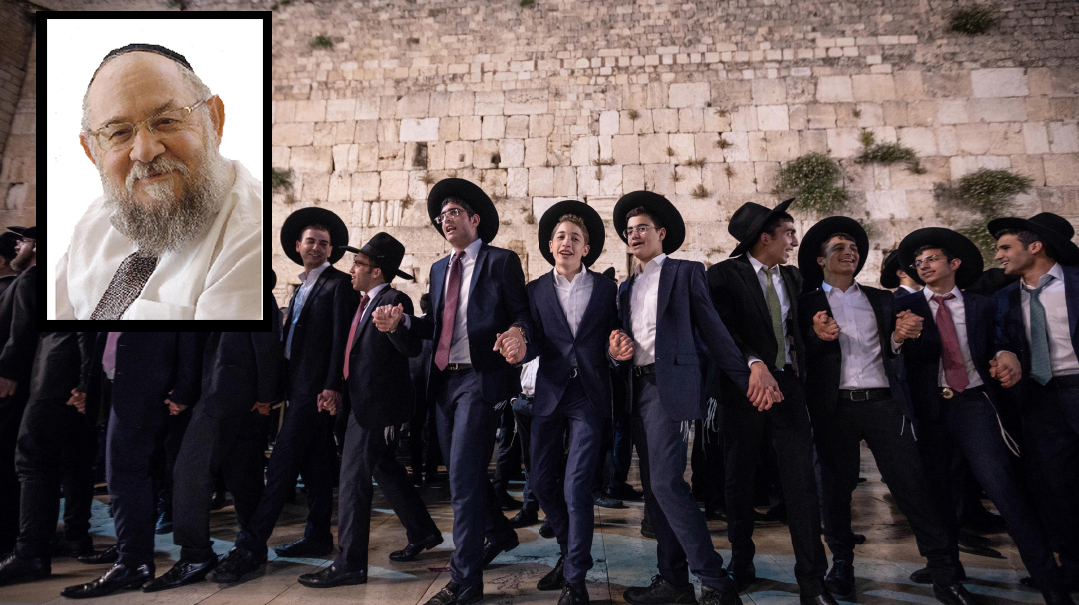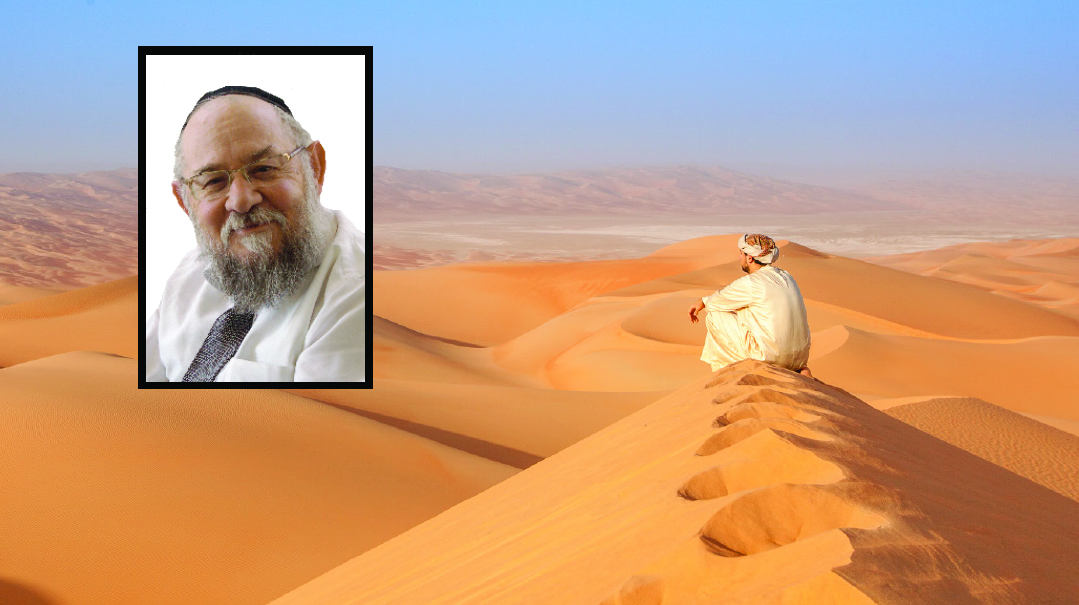Faith Moves Mountains

When we stood “as one man with one heart,” the timing was perfect, implanted in our DNA forever
"Hashem descended before the eyes of the entire People on Mount Sinai” (Shemos 19:11).
Without the Revelation of the Torah on Mount Sinai, the commandments given throughout the Torah would have no power to obligate anyone. For on that day, Heaven met earth, and the upper realms meshed with the lower realms, while the entire Jewish nation had a prophetic experience unlike any other, before or since. The impression of that enormous experience remains embedded in every Jew’s DNA to this day. That moment was the turning point of history, surpassing the boundaries of all previous human experience. From the moment that Hashem voiced the Aseres Hadibros, the world became a different place. Even the skeptics who cling to rationalist theories and reject any bothersome fact that doesn’t fit the philosophical framework they’ve created, are flummoxed by this event, provided, of course, that they have done their research seriously and are thoroughly familiar with the data they are dealing with.
Here is how things looked to early 20th-century secular Bible scholar Professor Yehezkel Kaufmann:
“Indeed, the Israelite faith, which emerged from an entirely new idea, split the world into two — an idolatrous world and an Israelite world. From the point of view of form, it could be said that in the final analysis, this is merely a unique innovation of the human spirit. But from the point of view of content, it cannot be seen that way. We must assume that what we have here is a special act of Hashgachah. But with this assumption we have in fact left the territory of experiential history and entered the territory of faith…” (Yehezkel Kaufmann, The Religion of Israel, Introduction).
I cite the words of this academic scholar not as a basis for emunah, but to point out that even a serious historical researcher has no choice but to resort to terms that go beyond ordinary historical experience (and Kaufmann is not alone in this), unless, of course, he wants to take the easier path of intellectual dishonesty and deny unimpeachable facts.
Other events of less obvious significance surround the central narrative of the Revelation at Mount Sinai, yet these sub-narratives offer an additional dimension to our understanding.
Let us look at three examples:
First, why did Yisro come out to the Wilderness?
The parshah’s opening words are: “Yisro, the priest of Midian, heard… of all that G-d had done… for Yisrael… and Yisro came… to Moshe, to the Wilderness” (Shemos 18:1-5). The Gemara asks, “What did he hear about that prompted him to come? About Kri’as Yam Suf and the war with Amalek” (also quoted by Rashi on the pasuk).
According to Chazal, it was these two events that brought Yisro to the Wilderness, to Moshe, to the camp of the Israelites. What was it about these two things in particular that moved Yisro to leave his home in Midian and trek out to the Wilderness?
Yisro, as we know from various sources, was one of the great thinkers of his time. All his life, he’d been searching for the truth. He’d brought many sacrifices on his altar. He sought out every idolatrous religion within reach and worshipped every false god, and every one of them disappointed him — until Moshe appeared at his home and opened the gates of his heart to the fundamental beliefs of the fathers of the Jewish nation.
When he heard about the miracle of Kri’as Yam Suf, he was finally convinced of the G-d of Israel’s omnipotence. But on the heels of this amazing news, he heard a new report: Amalek had attacked Bnei Yisrael!
This information posed a problem for Yisro. If some enemy could come along and attack Israel right after such an astounding and convincing miracle, then something wasn’t quite right. The pesukim of Shiras Hayam tell us, “Then the chieftains of Edom were alarmed, the great men of Moav, trembling seized them, all the inhabitants of Canaan dissolved in fear. Let dread and fright fall upon them….” How could a miracle that made all the nations tremble fail to deter Amalek from attacking G-d’s protected people? If they felt free to fall upon Israel, that meant it was possible to neutralize the feelings of awe that the miracle inspired. Fear of the nation saved by wondrous means could be overcome — all it took was a suitable theory to explain away the miracle as a natural phenomenon, nothing to get all excited about.
That was when Yisro realized that the logical conclusion he’d reached was not enough. If he wanted a solid basis for the emunah he had embraced, he would have to come and be among Bnei Yisrael and share with them the experiences of Matan Torah, which could not be explained away as a freak of nature.
The second sub-narrative: Hashem did not reveal Himself all at once at Sinai. Many preliminaries preceded Matan Torah, including the required preparations meant to bring the people closer to one another and create true unity among the various parts of the budding nation. For every member, without exception, had to be present in order to enable the formation of this special relationship between the human and the Divine.
Among the preparations, we find inspiring words for the momentous event soon to take place. For example: “You saw what I did to the Egyptians and how I carried you on eagles’ wings and brought you to Me;” as well as “So shall you say to the house of Yaakov and tell to the sons of Yisrael.”
Rashi, citing the Mechilta, explains: “To the house of Yaakov — these are the women. Say to them in soft language. And tell to the sons of Yisrael — the men. [Tell them about] the punishments and the exacting details, in words as tough as tendons.”
Chazal’s explanation highlights the difference between the expressions emor, say, and tagid, tell. And we see that Hashem instructs Moshe to speak to directly to the women, explaining to them what is about to occur in gentle terms suited to their more delicate and sensitive nature. This clearly shows us that the prophetic experience of the Revelation at Sinai was just as much for the women as for the men, that the two genders equally share the ability to experience the privilege of closeness to Hashem.
This direct address to the women contrasts sharply with the generally prevalent attitude toward women in other societies during that historical period and later in history, as well. This is another aspect of the conceptual revolution that took place on that great day.
A third sub-narrative: We find that Bnei Yisrael demonstrated rare and surprising maturity at Har Sinai. The pasuk says, “Vayachanu baMidbar, vayichan sham Yisrael — and they encamped [using the plural verb form] in the wilderness, and Yisrael encamped [using the singular verb form] there.” The singular verb, as Rashi famously points out, indicates that Bnei Yisrael were “as one man with one heart.” It was the perfect moment for giving the Torah, a moment without strife or disagreement, a moment of harmony and unity. For is not the whole purpose of the Torah to make peace? “All its ways are ways of pleasantness, and all its paths are peace” (Mishlei 3:17). At that moment, when peace reigned among the people, the way was opened for Matan Torah.
The Torah contains 613 mitzvos, and no one person can fulfill them all. Some mitzvos are specifically for Kohanim, some are specifically for women, others are only for people in certain unusual circumstances, and so on. Only the Jewish People as a whole, with transcendent emunah, can carry the burden of the Torah, and only when it is “as one man with one heart.”
(Originally featured in Mishpacha, Issue 798)
Oops! We could not locate your form.




